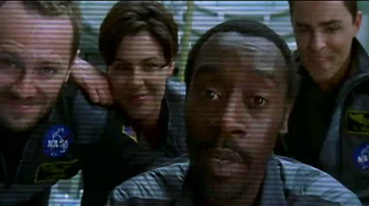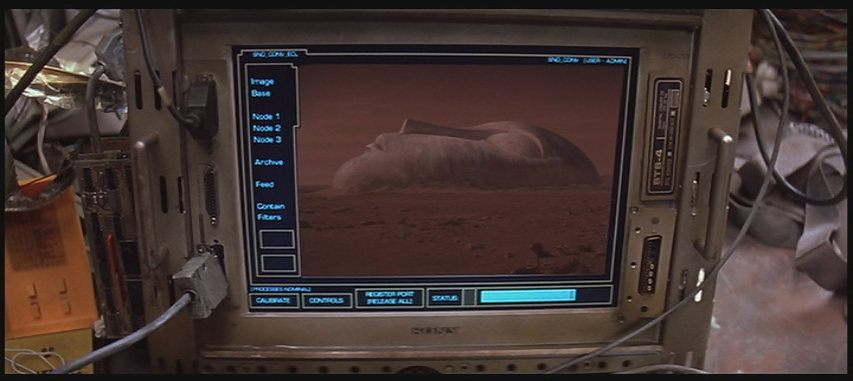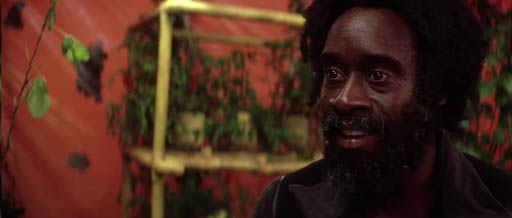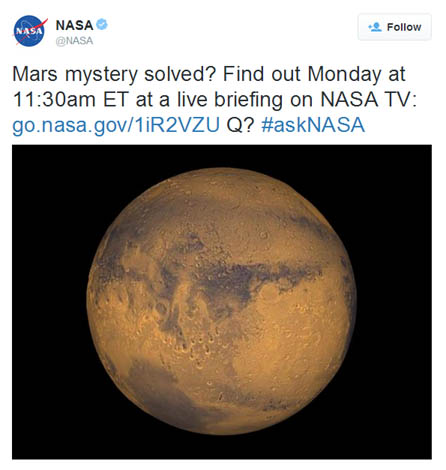'MISSION TO MARS' & 'THE FURY'
DOUBLE FEATURE JUXTAPOSITION HELPED CHANGE STEVE VINEBERG'S VIEW ON 'M2M' Critics At Large's Steve Vineberg
Critics At Large's Steve Vineberg revisted
Brian De Palma's
Mission To Mars a couple of weeks ago for an ongoing series called "Neglected Gems." "When I saw Brian De Palma’s
Mission to Mars in 2000 with a heckling, pre-release audience, I didn’t think much of it," begins Vineberg. "A year later, though, the American Museum of the Moving Image in Astoria screened it on a double bill with
The Fury as part of a month-long De Palma retrospective, and a group of former students who took me out there to see
The Fury persuaded me to stay and take a second look at
Mission to Mars. Perhaps it was the juxtaposition of the two movies that made me look at
Mission to Mars with new eyes,
but the second time around I fell in love with it.
The Fury has an almost insane narrative, but it’s a work of such visual inventiveness and emotional potency that, if you connect with it, the story is no obstacle; its excesses serve the movie just as equally ridiculous stories serve Jacobean tragedies and nineteenth-century operas. And though
Mission to Mars has a much simpler silly plot, it too is a kind of outline – you might say a metaphor – for De Palma’s ideas about the tension between technology and humanity and the nature of loss, his two favorite subjects."
After describing the plot of
Mission To Mars, Vineberg continues, "The key to gaining access to the face in the sand, it turns out, is the crew’s ability to furnish proof that they’re human.
Mission to Mars is a space story, but it’s the anti-
2001: A Space Odyssey. In De Palma’s
Blow Out, the hero (
John Travolta) keeps making the mistake of putting his faith in technology; so, on a smaller scale, does the teenage boy (
Keith Gordon) in
Dressed to Kill who’s trying to track down his mother’s killer. For these characters, technology is at best inadequate to achieve the (human, emotional) ends they want to put it at the service of; at worst it backfires and results in the deaths of the people they care about. By the time
Mission to Mars takes place, technology is inescapably the ruling force, but De Palma uses the fact of all this technology, ironically, as a way of focusing on the human dilemmas that beset the people who have to deal with its inadequacy and its capacity for bringing disaster. Science has found a way for the astronauts to float through space without the benefit of a space capsule, but only for limited amounts of time, i.e., only as long as the oxygen in the tanks strapped to their backs holds out. When Woody is unable to harness the drifting capsule after the rest of the spaceship has crashed, he finds he hasn’t enough oxygen left to return to his companions. Terri insists she should float out to rescue him – a futile act that would end up killing both of them. So Woody pulls off his helmet and meets the lethal pressure of Mars’s atmosphere head-on, an act of self-sacrifice that comes out of his love for his wife. The separation of husband and wife plays off one of the movie’s most ecstatic visual moments, when they dance together to a Motown tune in the gravity-free atmosphere of the spaceship en route to Mars. But De Palma fans will also recognize his trademark image – the character who watches in helpless anguish while someone, usually a loved one, is destroyed before his or her eyes – from
The Fury, Dressed to Kill, Blow Out, Casualties of War and
Mission: Impossible. Woody’s demise may be the most strangely poetic version yet of a motif that amounts to an obsession: Robbins’s face turns, magnificently, to cracked granite.
"The tragedy that divides Woody and Terri echoes, of course, the loss of Jim’s wife Maggie, whom we see only once, in a video (played, touchingly, by Kim Delaney) their friends prepared when they were chosen to helm the Mars mission. Jim watches it on a monitor in the ship when he winds up traveling there without her. It’s a double-time frame sequence – the video contains images from this joyous time interspersed with earlier ones from the McConnells’ wedding. I might not have made this connection had I not just rewatched The Fury, but the visual dynamic of an image embedded within another image and two sets of observers recalls the scenes in that movie where Amy Irving is caught in a psychic link with a besieged Andrew Stevens while someone else – who can’t see what she sees – tries to communicate with her. This is a visual notion with amazing emotional resonance for these stories of loss. In The Fury, Irving’s Gillian longs to meet the boy who shares her freakish psychic gifts; her separation from him, except in these imperiled visions she has no power to alter, underscores her isolation from the rest of the world, from the people she loves who don’t share her abilities. And when she finally does get close to him, it’s too late: he’s already destroyed. The video that brings Jim’s wife back to him, if only for a few minutes, is a trick of technology that is finally just a reminder of the uncrossable distance between them. He can replay this moment of happiness and relive not only his loss but also his bafflement: here they are at the peak of their lives together, anticipating a future that, though neither knows it, will never come to pass. In the video Maggie makes a toast to them standing at the threshold of a new world, but mere months later she was sick and he stood on the threshold of life and death, watching the most important person in his life fading away from him. De Palma gets at this idea in another way, too. The transmissions the first Mars crew sends back to earth have a twenty-minute delay. Back at home, Jim and the others watch as Luke and his companions, full of good humor and optimism, light a candle in a slab of cake to honor Jim’s birthday before setting out across the sand to explore the structure. The NASA observers have no way of knowing that even while they’re watching this transmission, twenty minutes after Luke sends it, his crew is being torn apart."
(Thanks to Hugh!)











 A couple of Mission To Mars-related items, beginning with
A couple of Mission To Mars-related items, beginning with 
